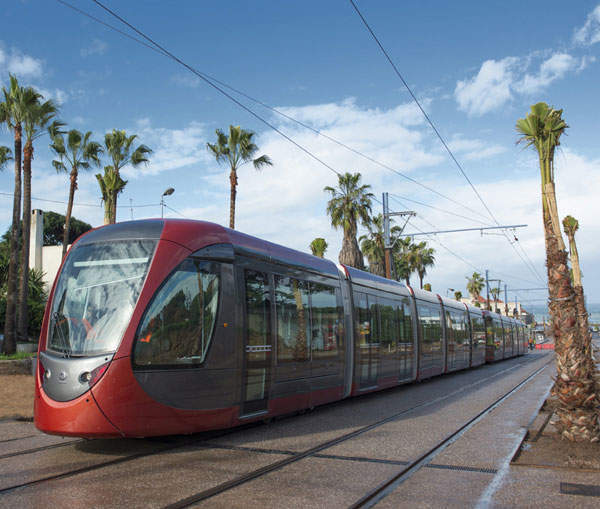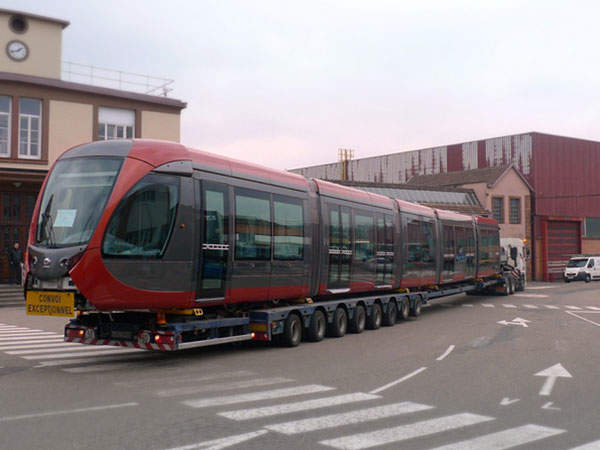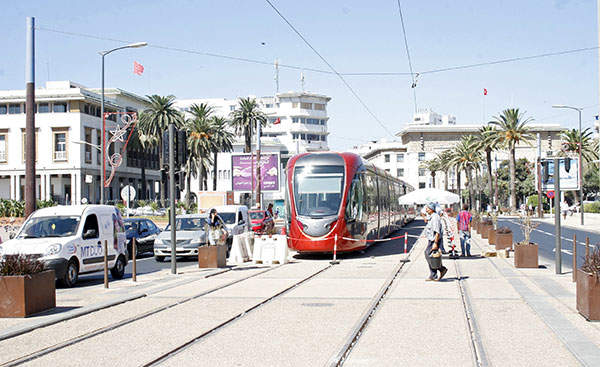The Casablanca Tramway line is the biggest of its kind in Morocco when it comes to the amount of stations and line length. The first line of Casablanca Tramway opened to the public in December 2012. The King of Morocco, His Majesty Mohammed VI, officially inaugurated the tram service.
Tram services are currently provided at frequencies of four minutes and 50 seconds for T1 line and six minutes for T2 line during peak time.
Two more lines, T3 and T4, will be incorporated into the Casablanca tramway network by 2022.
Line routes
The 31km Y-shaped Casablanca T1 tram line covers a number of areas, including Casa Voyageurs, Central Train Station and the Main Square. It connects the south-western and eastern suburbs of Casablanca to the centre of the city, covering 48 stations along the route.
The T1 line was extended by 2km to Lissasfa and has a total of 37 stations.
The new 19.5km T2 line runs between Anoual and Ain Sebaa and covers 33 stations across nine districts.
The proposed T3 line will have 20 stations, including Abdelkader Essahraoui Bvds, Idriss El Allam, Idriss Harti, Mohammed VI, Victory Square, Mohammed Smiha and Casa Port Station. It is expected to be operational by 2021.
The T4 line will be a 14km-long tram line with 43 stations and eight multimodal interchange hubs. It is expected to be completed by 2022.
Related project
Tangier-Casablanca High-Speed Rail Line, Morocco
The Tangier-Casablanca high-speed rail line is under construction in Morocco. The 350km long line will link Morocco’s largest city, Casablanca, with Tangier.
Background details of the first tramway in Casablanca
Casablanca tramway is a primary element of the Casablanca Urban Development Programme, which has resulted from an alliance between France and Morocco. The programme aims to enhance the living conditions of Casablanca, along with sustaining its potential as an economy.
The urban development programme initiated measures to enable the suburbs of Casablanca such as Dar Bouazza and Lahraouiyne to become integrated with the main urban zone. The programme also developed a regional financial centre, as well as housing units in the region of Anfa-Aroport. All these locations were subsequently connected by an efficient transportation system.
Construction of T2 line
The T2 line project began in 2016 and was completed in January 2019. It included construction of the T2 line and extension of T1.
T2 line has 22 stations and shares two interchanges with T1, covering major areas such as Ain Diab, Casablanca Finance City and Casablanca’s Ain Sebaa Zoo. It covers two urban plazas of Sraghna-Bouchentouf (8ha) and Préfecture Ain Sebâa (3.5ha).
The new line is expected to add 170,000 extra passengers to the network.
Rolling stock for the Casablanca tramway
Casa Tram awarded a contract to Alstom for 74 Citadis train sets for the Casablanca tramway in 2009. The trams provide services to around 250,000 passengers per day.
The company supplied 25 trams by 2019 for both T1 and T2.
The Citadis trams have been custom-built to facilitate free movement of passengers. Each tram can accommodate 606 passengers.
Trams have been specifically manufactured to match with the architecture of Casablanca. The interiors are inclusive of colours and motifs conforming to the specific style of Morocco.
Large tinted bay windows, air-conditioning and window aisles assure the passengers of comfortable ambience. The trams also have display systems providing information in Arabic and French.
Financing
The Moroccan National Government contributed MAD1.2bn ($135.7m) for the Casablanca tramway project. The remaining funds were mobilised through municipal budget and loans.
A loan of $307m was also borrowed from France for purchasing the rolling stock.
The T1 line was built with an investment of MAD5.9bn ($745m), while the extension of T1 line and construction of T2 line saw an investment of MAD4.3bn ($446.2m).
The construction of T3 and T4 lines will require an investment of MAD8bn ($828m).
Contractors involved in Casablanca tramway
A consortium known as Casa Tram was established by CDG (Caisse de Depot et Gestion), RATP (Paris Transit Authority) and Transinvest in 2009 to build the Casablanca tramway. The consortium was responsible for the operation and maintenance of the tramway for five years.
Casa Transports renewed the contract with RATP Dev to continue to operate and maintain for the tramway for 12 years from December 2017.
Casa Tram awarded the construction management contract for the tramway to a consortium of France-based Systra, and CID Engineering & Development Consultants of Morocco. The consortium handled issues pertaining to tendering, project design and supervision of construction.
Richez Associés provided the architecture for the T1 project and designed the stations along with Nejari. Aeysa, Transurb Technirail and ADI provided project management assistance.
A consortium of Systra, AREP and Council Ingenierie et Developpement (CID) was awarded a contract for project management for the construction of Line 2 and extension of Line 1.
Two more contracts were awarded to Alstom in 2010 for design, constructio and deployment of the signalling and power supply systems on the tram line. Traffic management of the tram line is being taken care of by the Central Command Post in Sidi Moumen.
Ciments du Maroc, a subsidiary of HeidelbergCement, supplied cement and concrete for both the projects.




